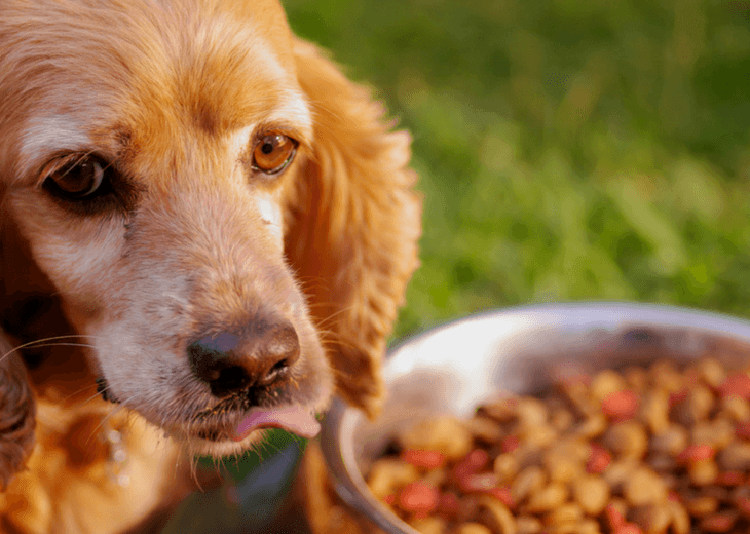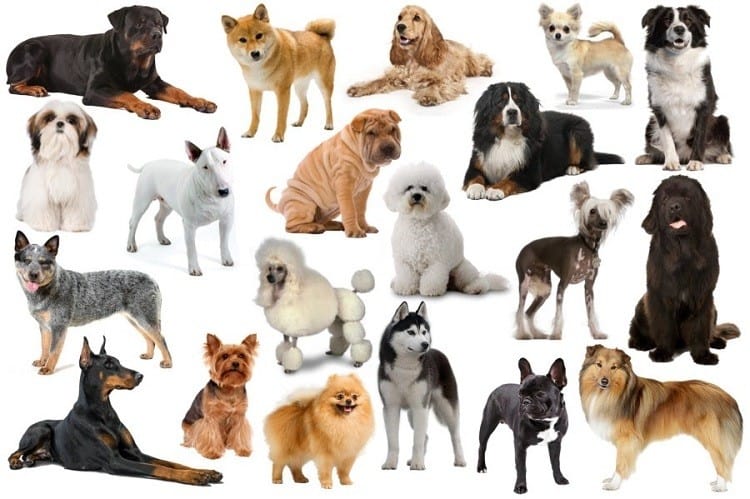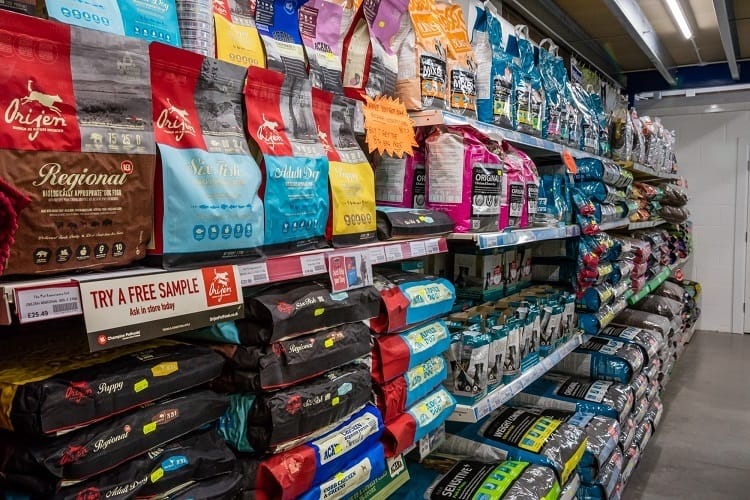The food that we eat every day plays a huge role in our wellbeing, and the same can be said for our dogs.
As their owners, it’s our responsibility to ensure that we’re giving them adequate nutrition and making healthy choices for them, but that can be hard to do when there are so many options out there.
Our dogs have unique requirements for nutrition so getting a basic understanding of how to meet them is something all pet owners should do.
Your own dog will have further specific needs for what foods they require, and it’s up to you to ensure that these are met.
This guide can show you what’s required from dog food, what to look for in wet and dry varieties, and how to read the sometimes detailed ingredient lists that come with them. The choices we make about their nutrition plays a major role in their overall health so it’s an important thing to get right.
What Your Dog Requires from Dog Food

There are just a few things that a dog needs from their food, and they’re much the same as what we require for ourselves.
Consider these things when you’re shopping for food, whether it’s a daily treat or a complete meal, and make sure you can meet them all:
Taste
Dog food shouldn’t just be healthy, but it should taste good as well.
We wouldn’t want to eat something ourselves that didn’t taste appealing so don’t expect your dog to the do the same. There are plenty of healthy options that taste good and it can sometimes be a matter of experimentation for you and your dog to get it right.
Nutrition
Dog food must meet nutritional standards and feature ingredients like whole meat sources and whole unprocessed vegetables and grains.
Anything with lots of ingredients, fillers, by-products, and mixed source meals is likely not going to be any good.
Specific health needs
All dogs have their own health needs and these can be met with their food. Some might require extras for bone and joint health, others for eyes and skin, and the rest should be purchased based on their weight, breed, and age.
These vary in their fat, protein, and pH levels so it’s important to get it right.
Learning How to Read the Ingredients in Your Pet’s Food
If you’ve never spent any time looking at the label on your dog’s pet food, now is a good time to start.
Even though a food is marketed as healthy and meeting all of their nutritional needs, without reading and understanding the ingredient list there’s really no way to determine if this is true.
The best approach is to look for an ingredient list that’s relatively short and filled with ingredients that you understand. Anything with a high-quality protein and a mixture of whole grains, vegetables, and other ingredients is usually going to be better than a highly processed option.
Anything that is vague, like “poultry meal” or “meat meal” is usually a mixture of various bits and pieces, and won’t be nutritious.
Therefore, opt for single meats like “chicken meal” or “beef meal” for higher quality. Keep your eyes out for artificial preservatives, colors, and flavors as well, because these should also be avoided.
The order in which ingredients are listed is also important. Pet food manufacturers follow guidelines that state they must list the highest content ingredient first and then the rest in descending order.
You’ll ideally want something with a whole protein source first, followed by other whole grains and vegetables.
Calorie Contents and What Your Dog Needs
Just like humans, dogs have individual requirements for how many calories they need to eat a day.
To get a specific number you should speak to your vet, otherwise, you can gauge your pet’s nutritional goals by looking at a few different factors. A couch potato dog won’t have as high energy needs as one who works all day on a farm, but there are other things to consider as well.
Age
Younger dogs are usually more active and thus require more calorie each day than senior dogs.
When your pet reaches their senior years, you’ll probably notice they require less food, so try not to continue feeding them as much as you did when they were more active.
Health
A dog’s health can impact how much food they need, whether they’re recovering from surgery or have an illness.
Usually, a sick dog will have higher energy needs as their body is trying to restore its health, so this isn’t the time to limit their calories. An inactive and sick dog might not need as much food though, so take this into consideration also.
Environment
Where you live can determine how many calories your dog needs. Some experts believe that dogs who live in colder climates and spend a large amount of time outside need between 10 – 90 percent more energy than others.
Breed

The thickness of your dog’s coat, their weight, and how much body fat they have will all impact their caloric needs. Usually, you can shop for food based on their breed otherwise consider each of these specific factors separately.
Pregnant/Lactating
A dog in the third trimester of their pregnancy may require up to three times as much food as normal. Likewise, a lactating dog who is nursing pups can need up to eight times as much as a normal dog.
Dietary Management
Has your vet suggested dietary management for your pet?
If so, you’ll need to make sure their calories meet these recommendations.
Some dogs may be on a calorie restricted diet to help them lost weight and others will be required to put on weight, so you must follow the vet’s instructions.
How to Find the Best Dog Food

Whether it’s wet food or dry food, or maybe even a dog treat, there are some things you can look for that will indicate better quality.
As well as reading and understanding the ingredients list, you want to make sure a dog food offers the following.
Dry food
Dry biscuits should be mainly made of an animal protein source with vegetable and grain sources following behind.
Animal proteins are important for their amino acids, but some plant proteins can be added as well.
Wet food
A good grain free wet food in a can is ideal for dogs, and it gives them some variety to just dry kibble. Again, you want to choose a food that is made with at least one source of animal protein and some other vegetables and natural ingredients.
Treats
Look for treats that are lower in calories but high in protein. A dog treat should only be around 10 percent of their daily caloric intake so make sure you stay in this range. Most quality dog treats are single ingredients like beef tendon or turkey, and there’s no need for multiple ingredients.
Does Expensive Food Equal Better Food?
Contrary to popular belief, you don’t have to spend a fortune on dog food just to ensure it’s healthy for them.
However, you will need to spend extra time looking over the ingredients and figuring out the price per pound to see what is the better option financially.
Modern dog foods tend to meet more of these nutritional requirements than they did in the past, and as we learn about what’s healthy for our pets it seems that these manufacturers are listening to customer’s demands.
It is possible to find a healthy and affordable dog food that suits your budget if you’re willing to shop around and take the time read ingredients, and your dog is definitely worth it.
Making the Best Nutritional Choices for Your Pooch

Our dogs rely on their daily food intake to give them energy, boost their health, and meet any specific needs they might have.
It’s important for us as owners to get a better understanding of the food options out there for dogs so we can start making choices that are only going to benefit them.
Keep in mind that there’s no right or wrong dog food that’s going to suit all of them and with millions of dogs in America alone we wouldn’t expect them to be.
You need to learn about what your own dog requires and then try to meet that with their food choices, guaranteeing the perfect fit.
It can take some time to learn the ins and outs of dog food and how to read the labels and ingredients correctly.
However, just as we wouldn’t want to put anything in our own bodies that is bad for us, our dogs deserve the same level of care and attention as well.

